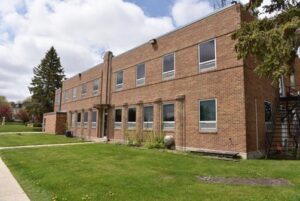Our analysis for a new market study project usually starts with pulling secondary data. We review the data and start to put a picture of the community together in our minds. Then, we make a list of questions the data begs us to ask such as, “What caused this?”
Next, our primary research we start to question why this is happening. Do you (client community) want this to continue? Are you ok with this trend? Does the data accurately reflect your current reality? This also provides us with the opportunity to check the community’s appetite for change, generate ideas, and start testing recommendations. Kind of like floating a trial balloon.
So, what happens when the initial data digging uncovers only bad news for a community? For example, what if the population is declining, wages for posted positions are declining, the community’s workforce is disappearing, home values are stagnate, or housing stock continues to age with few new units being constructed, etc. The data tells a sad story. Do we just accept our fate as a community and resign ourselves to the fact that the population is going to continue to decline?
We’d like to think not.
Changing Data Trends
We’d like to think that through focused, actionable effort, communities can turn the trend around. As we always say, community economic development is not a game for the impatient. Rather than wasting time asking why this happened and pointing fingers, the question to spend time answering is “What are we going to do about it now?”
Where to start depends on a lot of factors: leadership, collaboration, public-private partnerships, and elected officials with their eye on the future of their community. It also depends on a solid plan, implemented by dedicated staff, with the support of local leadership. If we, as practitioners, consultants, and staff members can see a trend in data we want to improve or turn around, we can devise a strategy with impactful tactics which work toward the goals. Then, we set up metrics or benchmarks because we want to measure the progress of the work we have done. Benchmarking is a way to measure the impact of past actions and facilitate the development of new strategies. Unfortunately, many communities, organizations, and individuals have a wish list of things they hope to accomplish without a strategy, timeline, or feedback loop.
Measuring Impact
Just as your personal healthcare provider looks at BMI, BP, HDL, LDL, etc. to measure the impact of your past actions, investors look at the past actions of firms, and funders and stakeholders look at past actions and future strategic plans of economic development organizations. How are you measuring progress? Do you have a strategy for improving those measures? Is there a feedback loop?
A short time ago, IEDC spent most of a year on the topic of measuring success. For example, several conference topics, webinars, and training courses stress the importance of measuring more than jobs created. Additionally, the impact of our work often takes time to come to fruition and isn’t necessarily easy to measure. Therefore, we need to track things such as:
- changes in employment
- changes in investment
- jobs created and retained
- numbers of business retention visits
- numbers of technical assistance calls received
- hours of technical assistance provided
- building permits
- incentives provided (cash, in-kind, tax abatements, etc.)
- dollars invested in housing rehabilitation
- numbers of new housing units created
- commuters
- incomes
- educational attainment
- volunteer hours
- training hours
- skills needed
- job openings
- and the list goes on
Examples of Changing Data Trends by Operationalizing Plan Goals
Here are some examples of data trends and how a goal, strategy, and corresponding metric can measure the impact on the community:
| Example #1 | Example #2 | Example #3 | |
| Data Trend | Declining Median Household Income | Home Ownership Increasingly Unaffordable | Increasing Retail Vacancy Downtown |
| Goal | Median Household Income Growth on par with inflation rate | Provide Affordable Ownership Options for Existing Residents | Healthy Commercial Vacancy Rate |
| Strategy | Upskilling Existing Workforce | Permit higher density development on smaller lot sizes | Create Downtown Vibrancy and Community Pride to drive pedestrian traffic |
| Metric | Enrollment in Skills Training | Benchmark current cost-burdened households | Visitor traffic |
| Responsible Party | Workforce Development Board | Local Government | EDC/Chamber |
| Timeline | 3 years | 3 -5 years | 2 years |
| Budget | $$$ | $ | $$ |
| Funding Source | State Workforce Development Grant | General Fund | BID, State Community Development Grant, State Tourism Development Grant |
Conclusion
The data informs the story. The strategic plan can change the story. However, only if the plan is operationalized – put to work and measured. The metrics can report the changes. This is like the song that doesn’t end, it just goes on and on, my friend.






